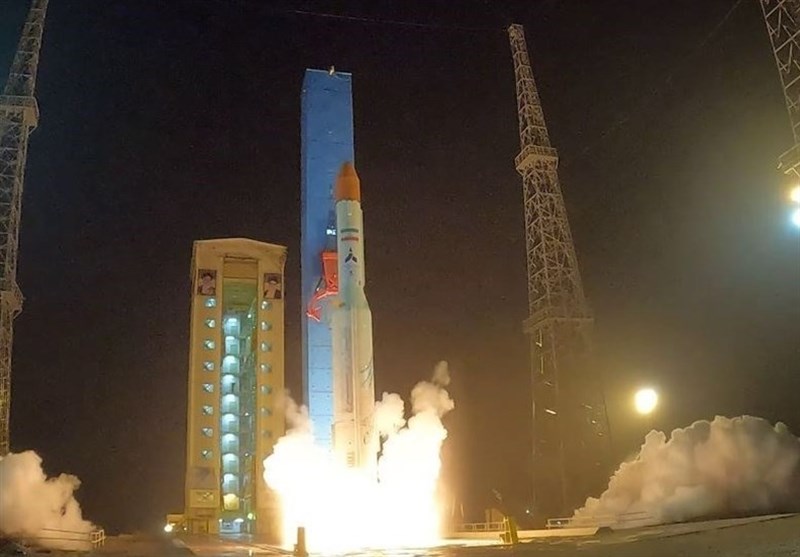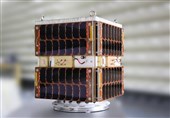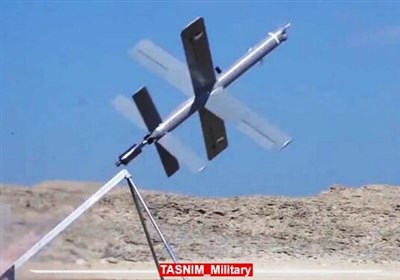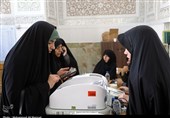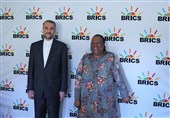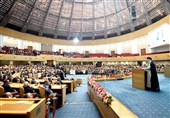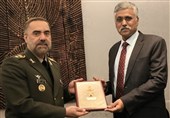Iran Boosts IoT Capabilities with Hatef, Keyhan Satellite Launches
TEHRAN (Tasnim) – Iran is accelerating its Internet of Things (IoT) capabilities with the martyr Soleimani System project, showcasing its prowess with the successful launch of the Hatef and Keyhan satellites.
The Iranian Space Agency highlighted the significance of the martyr Soleimani System project, stating that the Hatef satellite serves as a testbed for IoT technologies and narrowband communications. Testing these technologies is deemed essential for its development.
Hassan Salarieh, the Head of the Iranian Space Agency, referred to the Mehda satellite, emphasizing its role as a research satellite in communications with differences in frequency band and S-band data transmission. Notably, technologies such as dosimeter sensors for radiation measurement in space are incorporated, with a focus on assessing the impact on component lifespan.
Salarieh elaborated on the primary mission of research satellites, emphasizing the evaluation of subsystems, equipment, and systems developed by the private sector or research institutes. The Mehda satellite, developed at the Iranian Space Research Institute, belongs to the Soraya-type satellite category.
Various technologies, including solar cell-powered battery charging, power management, data management, flight computers, and communication systems, have been implemented within the Mehda satellite.
Iranian space authorities aim for operational satellites, emphasizing the need for flawless operation over an extended period in orbit. Design flaws and technical issues in developed equipment and subsystems could significantly reduce the satellite's lifespan.
Keyhan and Hatef satellites fall under the category of communication satellites, serving specific research purposes. Keyhan focuses on navigation assistance and increased position accuracy, utilizing new technologies essential for the country.
The Hatef satellite represents a groundbreaking venture into IoT and narrowband communication technologies, necessitating thorough testing. Evaluation of subsystem health, addressing technical malfunctions, and assessing vulnerability to radiation and heat are key aspects conducted by Iranian specialists through simulations.
The launch of the Hatef satellite aligns with the martyr Soleimani System project, with the Head of the Iranian Space Agency emphasizing the necessity of these tests for future projects. Each developed technology undergoes evaluation and assurance through cost-effective satellite testing, with potential defects identified through repeated tests.
Salarieh highlighted the successful completion of the third research test by the Qaem 100 satellite launcher, celebrating positive performance and achievements in the satellite industry.
Rapid reception of signals and data from the Mehda satellite is acknowledged, with ongoing efforts to establish communication with the Hatef and Keyhan satellites. Limited visibility of these satellites in the Iranian sky during the day necessitates strategic communication establishment during their brief passes.
Fixed satellites, such as the Qased and Qaem100 satellite launchers, operate in the 50 to 100-kilogram range. The Qaem100 satellite launcher specifically addresses payloads for low Earth orbits (LEO), showcasing successful operations with potential for heavier payloads.
Iran's advancements in the 100 to 200-kilogram category indicate positive conditions, with stabilization becoming imminent. Higher payloads, essential for achieving coverage at specific points, are the focus, requiring heavy satellite launchers for optimal placement in LEO.
According to the head of the Iranian Space Agency, “Every satellite placed in orbit remains like a space laboratory. We cannot simulate all space characteristics on the ground and in the laboratory environment in any way. The fact that a satellite is launched into space and stays in space for months and years, experiencing different and harsh space conditions (temperature and radiation conditions), and being able to use control algorithms and data analysis algorithms, means that we have a space laboratory or simulator in orbit.”
